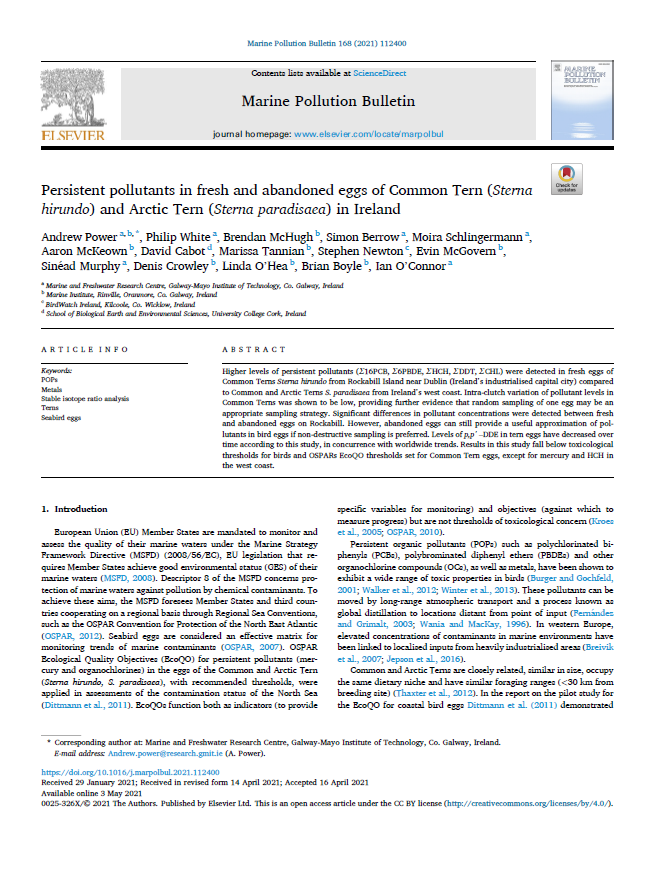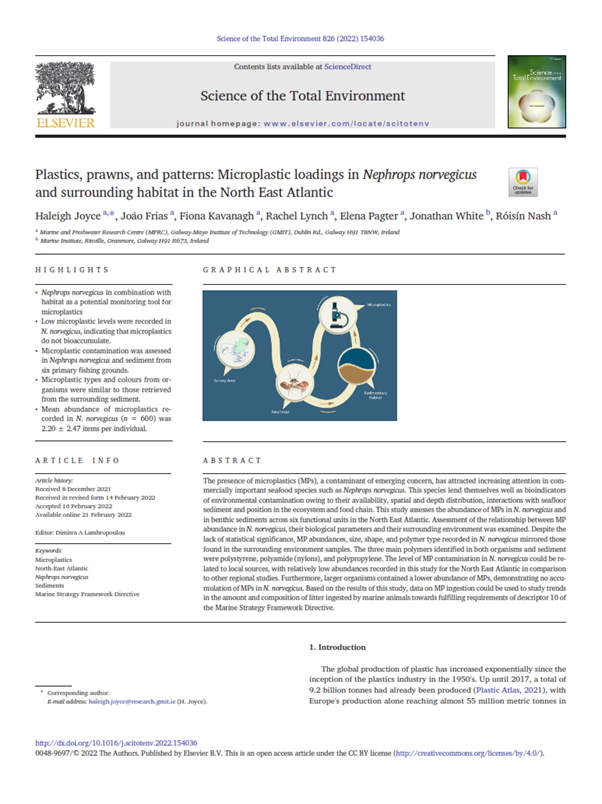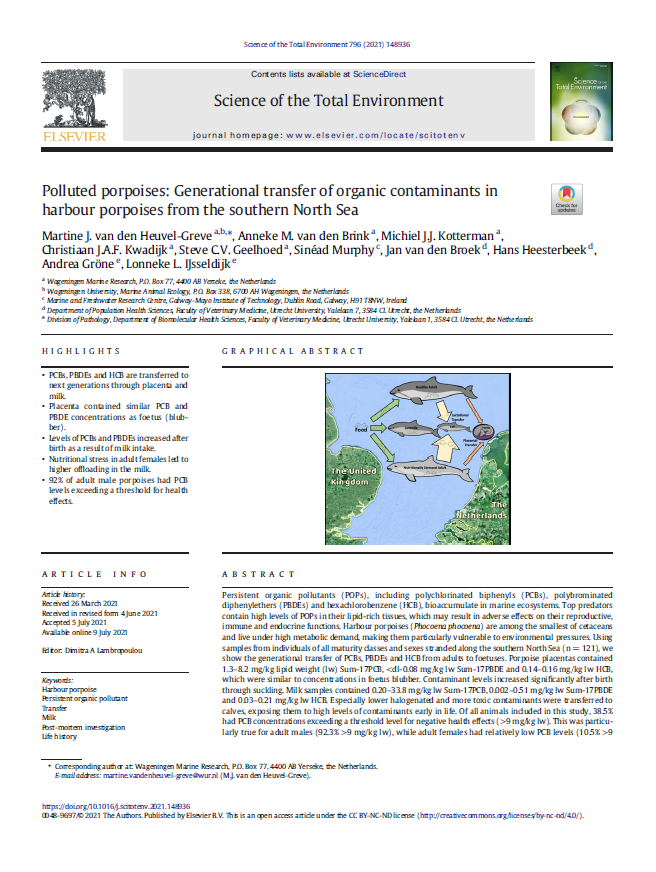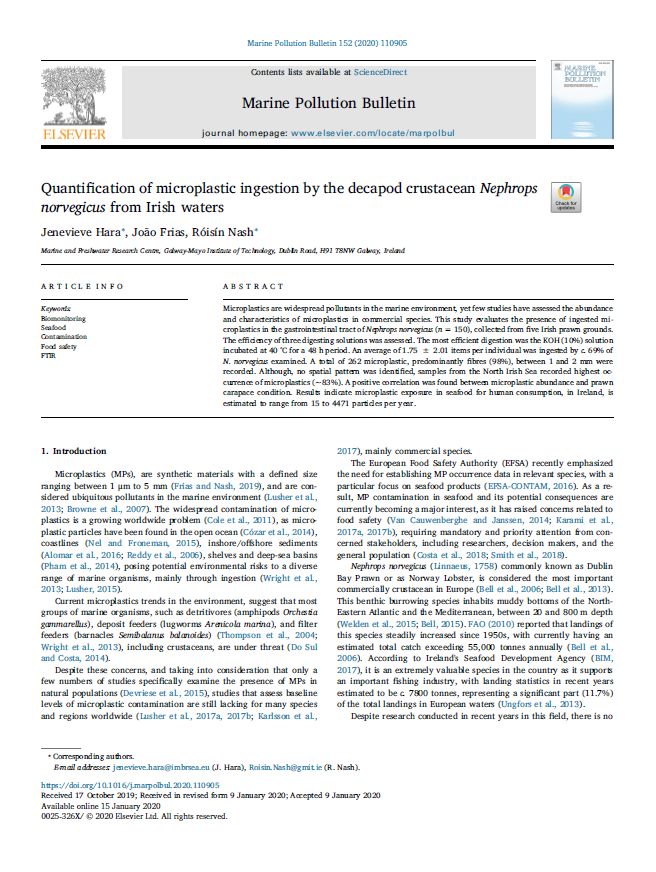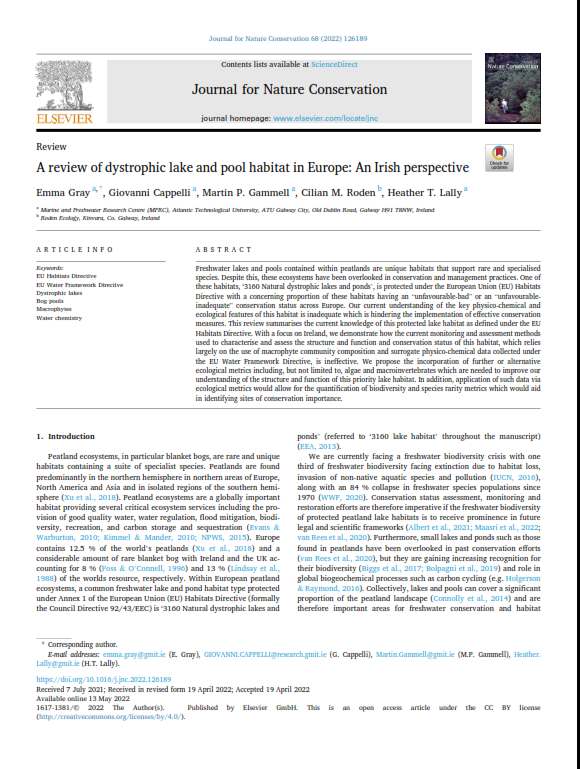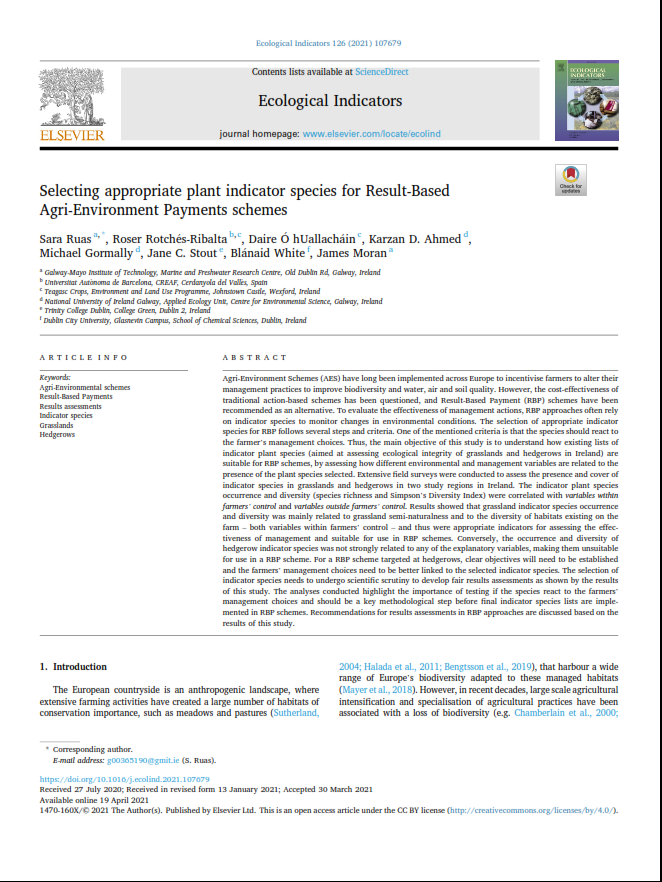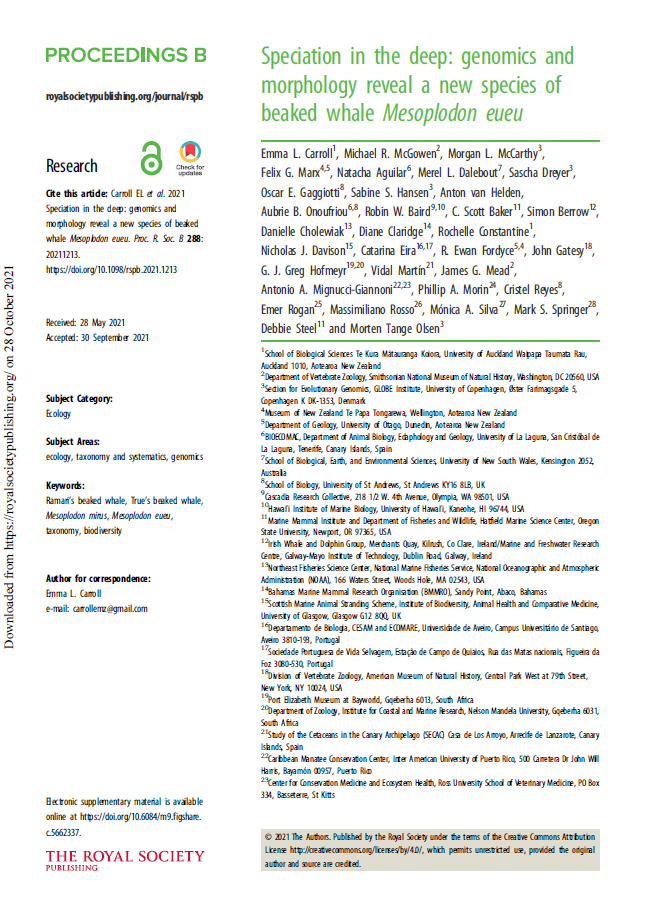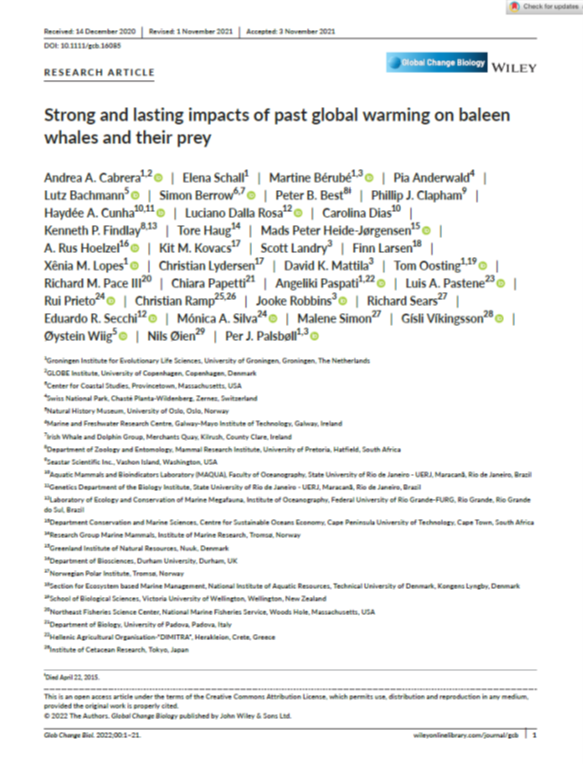Browsing Articles - Marine & Freshwater Research Centre, ATU Galway City by Title
Now showing items 58-77 of 80
-
PCB pollution continues to impact populations of orcas and other dolphins in European waters
(Macmillan Publishers, 2016-01)Organochlorine (OC) pesticides and the more persistent polychlorinated biphenyls (PCBs) have well-established dose-dependent toxicities to birds, fish and mammals in experimental studies, but the actual impact of OC ... -
Persistent pollutants in fresh and abandoned eggs of Common Tern (Sterna hirundo) and Arctic Tern (Sterna paradisaea) in Ireland
(Elsevier Ltd, 2-05-03)Higher levels of persistent pollutants (Σ16PCB, Σ6PBDE, ΣHCH, ΣDDT, ΣCHL) were detected in fresh eggs of Common Terns Sterna hirundo from Rockabill Island near Dublin (Ireland's industrialised capital city) compared to ... -
PESI - a taxonomic backbone for Europe
(2015-09)Reliable taxonomy underpins communication in all of biology, not least nature conservation and sustainable use of ecosystem resources. The flexibility of taxonomic interpretations,however, presents a serious challenge for ... -
Peterman's productivity method for estimating dynamic reference points in changing ecosystems
(Oxford University Press, 2022-03-15)Target and limit reference points are fundamental management components used to define sustainable harvest strategies. Maximum Sustainable Yield (MSY) and the precautionary principle underpin many reference points. Non-proxy ... -
PHOTO-IDENTIFICATION OF BOTTLENOSE DOLPHINS (TURSIOPS TRUNCATUS) IN TRALEE BAY AND BRANDON BAY, CO. KERRY: A CASE FOR SAC BOUNDARY EXTENSION
(ROYAL IRISH ACADEMY, 2016)The Lower River Shannon is a Special Area of Conservation (SAC) with bottlenose dolphins (Tursiops truncatus) as a qualifying interest, and is one of only two SACs for this species in Ireland. Bottlenose dolphins in the ... -
Plastics, prawns, and patterns: Microplastic loadings in Nephrops norvegicus and surrounding habitat in the North East Atlantic
(Elsevier B.V., 2022-02-21)The presence of microplastics (MPs), a contaminant of emerging concern, has attracted increasing attention in commercially important seafood species such as Nephrops norvegicus. This species lend themselves well as ... -
Polluted porpoises: Generational transfer of organic contaminants in harbour porpoises from the southern North Sea
(Elsevier Ltd, 2021-07-09)Persistent organic pollutants (POPs), including polychlorinated biphenyls (PCBs), polybrominated diphenylethers (PBDEs) and hexachlorobenzene (HCB), bioaccumulate in marine ecosystems. Top predators contain high levels of ... -
Polycyclic aromatic hydrocarbons (PAHs) in seabird eggs in Ireland
(Elsevier Ltd, 2021-06-19)Seabird eggs are considered a favourable matrix for monitoring marine pollutants and are widely used as higher trophic level indicators. Concentrations of Polycyclic aromatic hydrocarbons (Σ15PAH) were determined in the ... -
Prey preferences of sympatric fin (Balaenoptera physalus) and humpback (Megaptera novaeangliae) whales revealed by stable isotope mixing models
(2013)Over-exploitation of top predators and fish stocks has altered ecosystems towards less productive systems with fewer trophic levels. In the Celtic Sea (CS), discards and bycatch levels have prompted concern about some ... -
Quantification of microplastic ingestion by the decapod crustacean Nephrops norvegicus from Irish waters
(Elsevier B.V., 2020-01-15)Microplastics are widespread pollutants in the marine environment, yet few studies have assessed the abundance and characteristics of microplastics in commercial species. This study evaluates the presence of ingested ... -
A review of dystrophic lake and pool habitat in Europe: An Irish perspective
(Elsevier B.V., 2022-05-13)Freshwater lakes and pools contained within peatlands are unique habitats that support rare and specialised species. Despite this, these ecosystems have been overlooked in conservation and management practices. One of these ... -
Selecting appropriate plant indicator species for Result-Based Agri-Environment Payments schemes
(Elsevier Ltd, 2021-04-19)Agri-Environment Schemes (AES) have long been implemented across Europe to incentivise farmers to alter their management practices to improve biodiversity and water, air and soil quality. However, the cost-effectiveness ... -
Selection on ancestral genetic variation fuels repeated ecotype formation in bottlenose dolphins
(American Association for the Advancement of Science, 2021-10-27)Studying repeated adaptation can provide insights into the mechanisms allowing species to adapt to novel environments. Here, we investigate repeated evolution driven by habitat specialization in the common bottlenose ... -
Short note: the first confirmed successful refloat of a stranded bottlenose dolphin (Tursiops truncatus) in Ireland and subsequent resighting with a neonate
(2014-05)The article presents a study which discusses the refloating of bottlenose dolphins (Tursiops truncatus) and the subsequent resighting with a neonate in Ireland. Topics include the live-stranding events of a bottlenose ... -
Size dependent egestion of polyester fibres in the Dublin Bay Prawn (Nephrops norvegicus)
(Elsevier B.V., 2022-05-24)Microplastics (MPs) are an extensive global contaminant in the marine environment, known to be ingested by marine organisms. The presence of MPs in the commercially important marine decapod crustacean Nephrops norvegicus ... -
Social structure within the bottlenose dolphin (Tursiops truncatus) population in the Shannon Estuary, Ireland
(2010)The Shannon Estuary is home to Ireland’s only known resident population of bottlenose dolphins (Tursiops truncatus) and is designated as a candidate Special Area of Conservation (cSAC) for this species. Proper conservation ... -
Spatial separation of catches in highly mixed fisheries
(Springer Nature, 2018-09)Mixed fisheries are the dominant type of fishery worldwide. Overexploitation in mixed fisheries occurs when catches continue for available quota species while low quota species are discarded. As EU fisheries management ... -
Spatio-temporal genetic tagging of a cosmopolitan planktivorous shark provides insight to gene flow, temporal variation and site-specific re-encounters
(Springer Nature, 2020-02-03)Migratory movements in response to seasonal resources often influence population structure and dynamics. Yet in mobile marine predators, population genetic consequences of such repetitious behaviour remain inaccessible ... -
Speciation in the deep: genomics and morphology reveal a new species of beaked whale Mesoplodon eueu
(The Royal Society, 2021-10-27)The deep sea has been described as the last major ecological frontier, as much of its biodiversity is yet to be discovered and described. Beaked whales (ziphiids) are among the most visible inhabitants of the deep sea, ... -
Strong and lasting impacts of past global warming on baleen whales and their prey
(Wiley, 2022-02-02)Global warming is affecting the population dynamics and trophic interactions across a wide range of ecosystems and habitats. Translating these real-time effects into their long-term consequences remains a challenge. The ...


